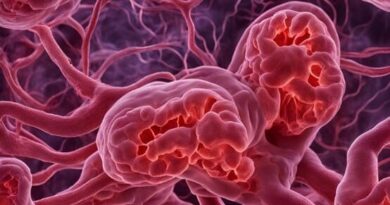Next-Gen CRISPR & Gene Editing
In the last decade, biotechnology has changed how we understand and treat diseases. At the heart of this revolution is CRISPR, a powerful gene-editing technology that allows scientists to modify DNA with great precision. But science never stops evolving and now, researchers are moving beyond traditional CRISPR-Cas9 to develop even more advanced, safer, and precise tools like Prime Editing and Base Editing.
These new technologies are opening doors to personalised medicine, in vivo gene therapy, and the possibility of curing previously untreatable genetic disorders.
What is CRISPR and Why is it Revolutionary?
CRISPR (Clustered Regularly Interspaced Short Palindromic Repeats) works like molecular scissors. It allows scientists to cut and modify specific DNA sequences, giving them the power to fix defective genes that cause diseases.
However, traditional CRISPR-Cas9 sometimes creates double-strand breaks in DNA, which can lead to unintended mutations or off-target effects. This limitation has led to the birth of next-generation CRISPR systems that aim to make gene editing more precise, predictable, and safe.
Prime Editing – The “Search and Replace” Tool for DNA
Prime Editing is often called the “search and replace” version of CRISPR. Instead of cutting both strands of DNA, Prime Editing uses a modified enzyme and a special guide RNA to rewrite a specific section of DNA with extreme precision.
No double-strand breaks – reduces unwanted DNA damage
Can correct up to 90% of known genetic mutations
High accuracy – perfect for delicate corrections in human genes
This breakthrough has huge potential for treating genetic diseases such as sickle cell anaemia, cystic fibrosis, and muscular dystrophy.
Base Editing – Fixing Single DNA Letters
Base Editing is another innovative upgrade over traditional CRISPR. Instead of cutting DNA, it changes a single letter (base) in the genetic code for example, converting an “A” to a “G.”
Base Editing offers:
Precision correction of single-base mutations (the root cause of many diseases)
Reduced risk of off-target effects
Applications in agriculture and medicine
Indian biotech startups and global research labs are already exploring how Base Editing can be applied in gene therapy, cancer treatment, and crop improvement.
In Vivo Gene Therapy – Treating Diseases Inside the Body
One of the most exciting advances in gene editing is In Vivo Gene Therapy: delivering CRISPR-based treatments directly inside the patient’s body.
Instead of removing cells, editing them in a lab, and putting them back, scientists can now inject gene-editing tools directly into specific organs or tissues.
This approach could revolutionise treatments for:
Heart diseases
Liver disorders
Inherited genetic conditions
Rare diseases with no existing cure
For example, researchers are testing lipid nanoparticles and viral vectors to safely deliver CRISPR or base-editing components into the body; a major step towards real-world gene therapy applications.
The Future of Gene Editing in India and Beyond
India’s biotechnology sector is growing rapidly, supported by government initiatives like “Make in India” and “Bioeconomy 2030.” Indian researchers are contributing to global progress in CRISPR innovation, genome sequencing, and molecular medicine.
With proper ethical regulations, affordable access, and public awareness, India could become a major hub for genomic research and precision medicine in the next decade.
Conclusion: A Safer and Smarter Future for Medicine
The shift from traditional CRISPR-Cas9 to Prime Editing and Base Editing marks a new era in biotechnology. These next-generation tools promise greater accuracy, fewer side effects, and unprecedented opportunities to cure genetic diseases at their root.
As science advances, gene editing will play a crucial role in shaping the future of healthcare, helping humanity move closer to personalised, targeted, and long-lasting treatments for complex diseases.





Revolutionize mutation and treatment can help better to the patients. Excited to read more about it.